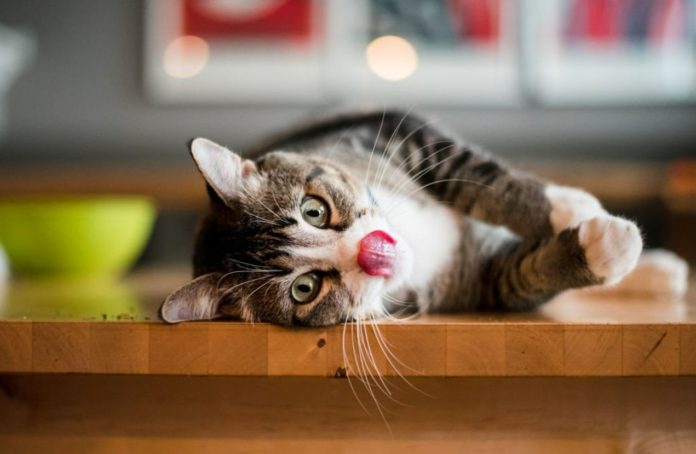Scientists believe the findings of the study may help find a potent natural repellent against pest insects from plants.
Anyone who has witnessed a cat on catnip will attest to the fact that it causes the animal to act a little bit crazed, with vigorous rubbing, rolling, chewing, and licking. Although it is often assumed that this plant and its Asian cousin, silvervine, contain intoxicating effects, this may not be the primary reason cats lick and chew on them. When cats damage catnip, substantially higher amounts of potent insect repellents are released, indicating that the cats’ behavior protects them from pests, according to Japanese researchers. This work is published in iScience on June 14.
Catnip and silvervine have such a widespread effect on cats that lead author Masao Miyazaki, an animal behavior researcher at Iwate University, had to figure out what was going on. “Even in the famous musical Cats there are scenes where you see a cat intoxicate another cat using catnip powder,” he adds. Miyazaki began his work in veterinary medicine, where he became interested in how substances such as pheromones influence the innate behaviors of companion animals.
The iridoids nepetalactol and nepetalactone, found in catnip and silvervine leaves, protect the plants from pests. Miyazaki collaborated with chemists at Nagoya University to investigate how cats’ behavior affected the chemicals emitted by plants. “We found that physical damage of silvervine by cats promoted the immediate emission of total iridoids, which was 10-fold higher than from intact leaves,” explains Miyazaki.
Not only were more iridoids released, but the composition of those that were released changed in ways that seemed to favor the cats. “Nepetalactol accounts for over 90% of total iridoids in intact leaves,” adds Miyazaki, “but this drops to about 45% in damaged leaves as other iridoids greatly increase.” “The altered iridoid mixture corresponding to damaged leaves promoted a much more prolonged response in cats.”
Miyazaki and his colleagues previously demonstrated that these chemicals efficiently repel Aedes albopictus mosquitoes. The researchers have now discovered that when cats rub, roll, lick, and chew the plants, the repellent characteristics become much more powerful. At low concentrations, the diversity of iridoids in damaged silver vine leaves makes it more repellant to mosquitoes.
For testing, the cats were fed dishes containing pure nepetalactone and nepetalactol to see if they were reacting to these chemicals specifically. “Cats show the same response to iridoid cocktails and natural plants except for chewing,” Miyazaki explains. They taste the chemicals on the plastic plate, rub up against it, and roll around on it.
“When iridoid cocktails were applied on the bottom of dishes that were then covered by a punctured plastic cover, cats still exhibited licking and chewing even though they couldn’t contact the chemicals directly,” explains Miyazaki.
“This means that licking and chewing is an instinctive behavior elicited by olfactory stimulation of iridoids.”
Cats find both catnip and silver vine to be especially appealing, but these two plants are not closely related. As secondary plant metabolites, these unrelated plants have evolved to create iridoids that are highly similar but not identical.
According to the researchers, cats’ olfactory and behavioral sensitivity to plant iridoids has been fine-tuned to display a sustained distinctive response to either a low level of complex iridoids emitted by damaged silver vine or a considerably higher amount of nepetalactone emitted by damaged catnip.
“Our findings highlight the possibility that plant-damaging behavior, which occurs alongside self-anointing, might play an important role in gaining pest-repellency in other animals as well as cats,” says Jane Hurst, a co-author of the study from the University of Liverpool.
“Our study has also provided valuable insight into how we can obtain potent natural repellents against pest insects from plants.”
The next step for Miyazaki and his colleagues is to figure out which gene is responsible for cats’ reactions to catnip and silvervine.
“Our future studies promise to answer the key remaining questions of why this response is limited to Felidae species, and why some cats don’t respond to these plants,” Miyazaki says.
Image Credit: Getty
You were reading: Cats’ Strange Behavior To Catnip Makes It Repel Mosquitoes
